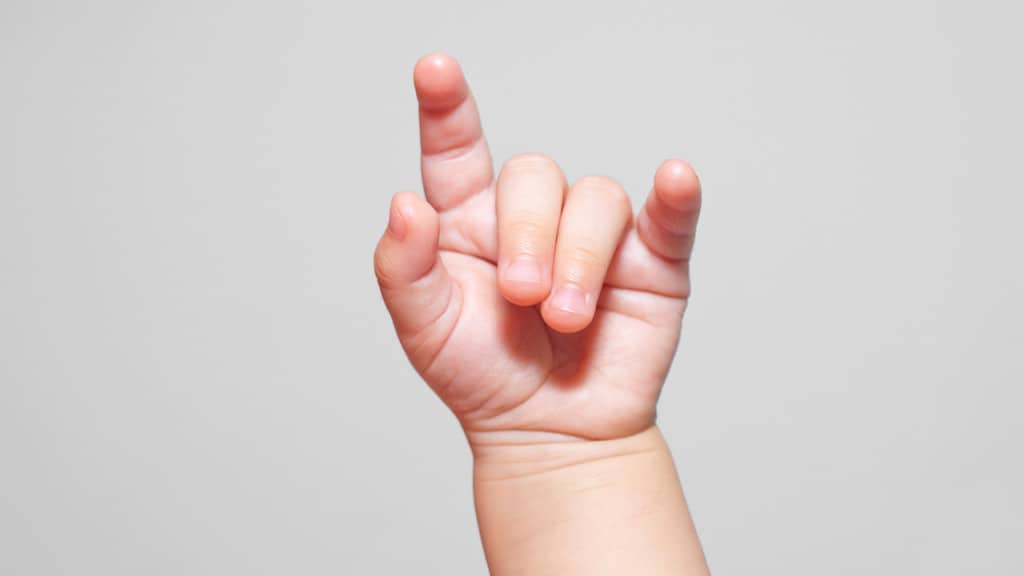When an infant is too young to speak, it can be hard for parents and nannies to know exactly what the little one wants. While it takes time for language to develop, children can often understand and mimic before they can speak. As children can often sign at an early age, more and more parents and caregivers are turning to baby sign language to boost communication with their preverbal kids.
What is Baby Sign Language
Baby sign language is a set of simple hand gestures (aka signs) that correspond to common words you use with the baby every day. Parents and babies can create a new relationship and for specific things, they can directly communicate. When a sign is known, a baby can sign their need instead of crying or simply pointing. This encourages more signed as the child learns “Sign – Response” is more effective than a “Cry – Response”. Thus, Baby Sign Language provides a communication tool filling up the gap between what children need and their ability to express that need. This is particularly helpful with toddlers who struggle to make themselves understood which often leads to frustration and tantrums.
Baby sign language should use a modest number of signs and the gestures should be kept simple. Sometimes the baby signs are the same as those used in American Sign Language, but not always.
Why Use Baby Sign Language
There are a lot of benefits to using baby sign language including creating a connection, expanding communication and supporting cognitive and emotional development. The process of teaching and learning baby sign language can create a stronger adult-child connection. As you pay closer attention to the baby’s attempts to communicate and take the time to both speak and sign. Teaching a baby to communicate using gestures can also be exciting and fun. It’s an opportunity to watch your baby think and learn.
Research on baby sign language has found that teaching baby signs improves cognitive and emotional development. Baby sign language increases the rate of verbal development and at the same time increases the parent/child bond. The National Institute of health (NIH) funded a study comparing two groups of 11-month-old babies. One group was taught baby sign language while the other was given verbal training. The signing group had more advanced talkers and their lead in verbal skills continued to grow. At the age of 2, the signers exhibited verbal skills three months ahead of the non-signers. After the age of 2, the signer’s edge seemed to shorten, but they were still ahead at 3.
When the NIH study authors reevaluated these groups at age 8, there was still a discernable difference. Even though the signing had stopped, the signing group averaged 12 points higher on their IQ tests compared to the non-signing group. Although the studies to date have been small, the results combined with anecdotal evidence from parents makes researchers optimistic about future results.
When to Start Using Baby Sign Language
A good time to start is when the baby is between 4 and 6 months. Generally, you can teach baby by saying a word, like “milk,” while making the sign at the same time, and then giving baby the milk. Keep in mind, your little one likely won’t start making signs on her own until he or she is about 7 to 10 months old. Using baby sign language, you can teach a baby to share when he or she is hungry, wants more or is all done. When a few basic signs are known, you can teach other signs. These can include hot and cold or asking if they want a hug.
How to Teach Baby Sign Language
As you teach baby sign language, it’s important to continue talking to the child. Spoken communication, through talking and reading, is an important part of a child’s speech development. When starting baby sign language, it’s important to set realistic expectations. Until a child responds with understanding, keep signs simple. Start with signs to describe routine requests, activities and objects in your child’s life — such as more, drink, eat, mother and father.
Make baby sign language fun and interactive. Try holding your baby on your lap, with his or her back to your stomach. Embrace your baby’s arms and hands to make signs. Use signs while communicating with your baby. To give signs context, try signing while bathing, diapering, feeding or reading to your baby.
Be patient. Don’t get discouraged if your child uses signs incorrectly or doesn’t start using them right away. The goal is improved communication and reduced frustration — not perfection. However, avoid accepting indiscriminate movements as signs.
Not all babies will embrace signing. Some babies will grasp the idea quickly and enthusiastically while others may prefer to babble and point. When you start teaching sign language, don’t expect an immediate result. The child may be too young to respond, or he/she may need more time and repetition. When teaching sign language, it’s important to make sure the entire family and care team is on board and uses the same signs consistently. As all children develop at their own rate, the exact time that the baby will begin to respond with baby sign language will vary from baby to baby.
Nannies can learn more by enrolling in the Baby Sign Language course as part of the Specialist Childcare certification program at the Nanny Institute.


This article was super helpful to me in going forward with my baby signing .thank you .